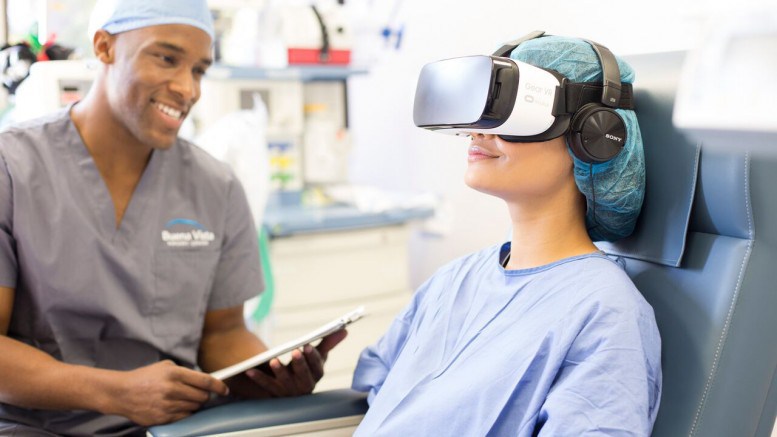Three Ways Virtual Reality is Aiding Healthcare
The use of virtual technology in the healthcare sector is changing the way people interact with healthcare professionals, how services are delivered, and ultimately transforming every facet of the patient experience. While the applications are endless, here are a few of the distinct ways that VR technology is redefining the way healthcare is delivered.
- Reducing Wait Times via Virtual Clinics
The idea of VR has been around for serveral years, however new applications are making serious waves in the medical field. Virtual reality applied to patients equips them with the potential to reduce wait time, and easily access world-class healthcare via their device. Using VR, wait times can be minimized for both urgent care and prolonged treatments.
With VR, patients can visit staffed locations via a virtual session with a remote doctor or specialist using a teleconference system. A Washington-based health system has launched a virtual hospital where 200 doctors and nurses assist in caring for patients in surrounding communities exclusively through telemedicine. Nurses can provide more personalized attention, and patients have the advantage of shorter wait times.
- Creating Immersion Experiences for Patients
VR has already helped researchers study and even treat mental disorders. It’s been used to help ex-soldiers overcome symptoms of PTSD or treat individuals with anxiety, stress disorders, obesity and eating disorders.
With VR being so stimulating, studies have found patients are more likely to do their rehab exercises; according to one company, 100% of stroke patients forgot they were in the hospital at some point while doing their rehab via VR. In another application, a hemophilia clinic at Nationwide Children’s headset uses a virtual reality game system to keep young patients calm during procedures, immersed in playing a game throughout their visit.
3. Improving Quality of Care
VR technology is also helping surgeons to solve complex cases, leading to better outcomes for patients. A Children’s Hospital Los Angeles has been using virtual reality simulations to prepare physicians for real-life medical emergencies. At the OSF Saint Francis Medical Centre, doctors can use virtual reality to prepare for surgeries. Using the technology, its staff has been able to enlarge hearts to a size where they can essentially step inside the heart, closely observing a hole they’re about to surgically patch.
With affordable, high-quality virtual reality devices hitting the market, its applications are numerous. However, despite its vast potential to revolutionize healthcare, it may take some time before this technology is accepted into the mainstream.
Goldman Sachs projects that the worldwide market for VR in healthcare will reach $5.1 billion by 2025, and consumers are certainly expressing continued demand for implementing new technologies. However, keeping patients informed about options and navigating any pitfalls with the technology will be key in moving the bar and transitioning these technologies to the mainstream.
Reality X is keeping up with the cutting edge trends that are emerging in this space and are contributing to building out programs that help healthcare providers who want to connect with their patients through this new medium.


